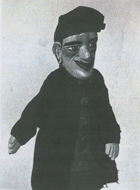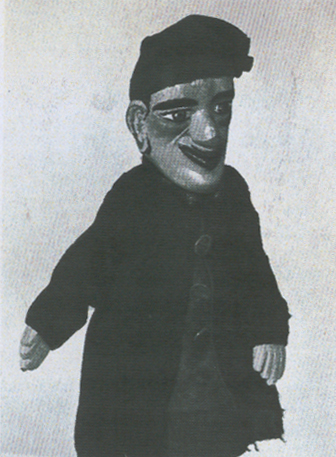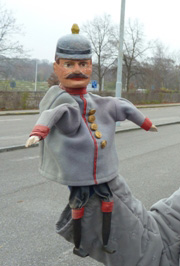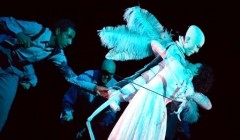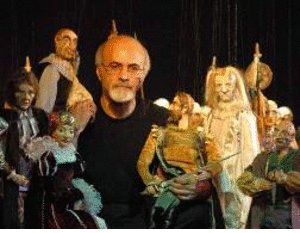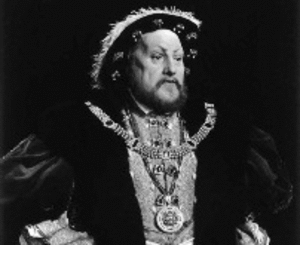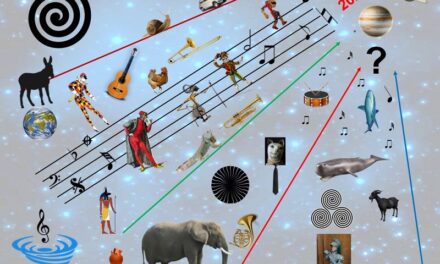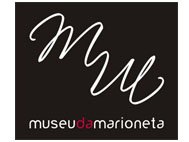The traditional popular puppet in Denmark, Mester Jakel, arrived here around 1790. In all probability he came from Northerne France with travelling puppeteers. The origin of the name is not completely clear, but according to Svend Smith it must be regarded as a Danicisation of Maître Jacques, who was one of the local puppet heroes in Northern France.
According to police licences, Mester Jakel shows were held from 1795 in a tent next to the potter’s workshop by Kirsten Piils Well at Dyrehavsbakken in Klampenborg. At first, the pots played a role in the Jakel shows, being used instead og Mester Jakel’s stick and broken during the performance.
In 1863 the tent was replaced by a wooden booth painted in the traditional colours – red and white. The booth, in different forms, remained there until 1983. It was equipped with a stationary stage and was large enough for the puppeteer to be completely hidden from the public.
Mester Jakel is played as two-hand comedies with glove puppets. The cast includeshis wife Rosalia, the Jew, the Recruiting Officer, the Doctor, the Wizard, the Devil, the Dog and the sausage. The plot is absolutely fixed, with elements of repetition and greatly simplified characterisation. The comedies consist of a number of acts in which the hero – Mester Jakel – is confronted by the other players, one by one. Most of the acts end in fights, which the hero, in accordance with the convention, always wins.
Mester Jakel is a comic character, but he is also cunning and disrespectful, and his faithful henchman is his stick with which he batters his partners and opponents. His voice is shrill and penetrating, but without use of swazzle and he demonstrates his invincibility with immense verve. In the oldest comedies, Mester Jakel’s costume consisted of trousers, sweater and a red hat with tassel on it. He was sometimes equipped with legs that could be thrown up over the ramp or kick. His features were not so caricatured as they became later on, as Mester Jakel turned into a far more grotesque figure with a big, long nose, jutting jaw, protuberant eyes and a wide, ferocious grin – wearing a jester’s costume complete with bells on the hat – not unlike the English Punch.
The words largely came from German puppet comedies, although the repertoire still includes the “Madame Rosette” comedy, whose theme has roots in antiquity. The words, with some improvisation, were based on fixed scenarios and were handed down from generation to generation until about 1900, when they were written down. They thereby became far more stereotyped, losing the originality that had been guaranteed by the custom of improvisation.
For more than 200 years Mester Jakel’s only permanent home was at Dyrehavsbakken, with the funfair’s performers, who kept him alive. For many years, Mester Jakel has been played by Pierrot – and thus also by Erico Lund, who was Pierrot from 1963 till 1983 and who, besides playing these two figures, also managed to bring fresh life to the comedies and add several new ones. When he died there was no one to take over the Mester Jakel part until in 1997 where Kurt Flemming started as Pierrot and very soon after took up the tradition and now he playes the old comedies in his new red and white booth several times a day during the summer.
Bibliography:
Enevig, Anders: Pjerrot spiller Mester Jakel. Copenhagen. 1970.
Livbjerg, Birgitte: Dukker i Danmark. Dukketeater i Norden. Oslo.1974.
Skaarup, Lilo: Om Mester Jakel og hans familie. Institute of Theatrical Science. Copenhagen University.1992.
Smith, Svend: Mester Jakel. Copenhagen.1945.

